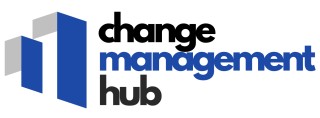-large-teaser.webp)
Understanding Agile Principles in Product Lifecycle
Grasping the Core Values of Agile in Product Lifecycle
In the realm of product lifecycle management (PLM), understanding agile principles is crucial for ensuring efficiency and adaptability. Agile methodologies emphasize collaboration across cross-functional teams, rapid iterations, and responding to change promptly, which all align harmoniously with the fast-paced demands of product lifecycle management. Agile PLM solutions facilitate continuous improvement in product development cycles, allowing businesses to adapt dynamically to market changes. Utilizing agile, management teams can keep product development in sync with shifting customer needs by integrating feedback swiftly and maintaining product quality throughout the lifecycle. The agile approach focuses on time-to-market, a critical factor for businesses aiming to achieve competitive advantage. By emphasizing customer collaboration, agile methods ensure that product designs are not only innovative but also relevant to current market demands. In leveraging agile, product managers gain insights from product data, harnessing its potential to inform decisions throughout the lifecycle. Incorporating agile principles into product lifecycle management is beneficial across various stages from conceptual design to supply chain integration. Oracle Agile, a prominent PLM system, offers flexible and scalable solutions which support agile product management by fostering continuous development processes. Through agile PLM software, organizations can enhance product quality and streamline processes by utilizing data efficiently in a cloud-enabled environment. To delve deeper into the agile project management strategy within specific industries, our article on navigating agile project management in the global coffee industry illustrates real-world applications of agile methodologies. This example underscores how agile principles can transcend traditional PLM boundaries, making them essential for modern business success.Identifying Challenges in Change Management
Recognizing Obstacles in Transition Management
Agile principles promise flexibility and responsiveness, but implementing them within existing product lifecycle management (PLM) frameworks is not without challenges. As businesses strive to bring innovations to market faster, several hurdles arise.
Firstly, change management involves transforming deep-rooted processes to accommodate agile methods. This requires a shift in mindset for teams accustomed to traditional practices. The balance between maintaining current product quality and embracing an iterative, agile approach can be delicate.
Managing product data and lifecycle stages adds another layer of complexity. In particular, integration with plm software and systems can face resistance, especially when dealing with legacy systems. Companies often need to ensure that agile methodologies align with their existing quality management protocols to avoid compromising on standards.
- Adapting existing development processes to agile without disrupting the time to market
- Ensuring cross-functional teams can effectively collaborate despite differing workflows
- Aligning agile methods with complex cloud plm and oracle agile solutions
These challenges are keenly felt across sectors striving for innovation. Thus, understanding how to navigate these difficulties is crucial for successful agile transformation. For more insights on how these changes impact specific industries, explore the global coffee industry example.
Integrating Agile into Existing Processes
Seamlessly Merging Agile with Current Frameworks
Integrating agile principles within existing product lifecycle management (PLM) frameworks can be a challenging task, yet it offers significant potential for improvement. Companies that rely heavily on traditional PLM systems, such as those managing vast amounts of product data or those using Oracle Agile, find themselves at a crossroad between innovation and proven methodologies. Creating a harmonious blend of agile methodologies with the structured nature of PLM systems involves understanding the core principles of agile alongside the rigidity inherent in traditional processes. Companies can achieve this by employing cross-functional teams that are adept at balancing agile practices with established product development processes. Incorporating agile into current frameworks involves several key strategies:- Assess the Current Framework: Start by evaluating the current PLM system and identify areas where agile methodologies can support or enhance the software development and management processes, such as reducing time to market and improving product quality.
- Leverage Cloud-Based Solutions: Utilize cloud PLM systems to foster collaboration across different teams, thus enabling a more agile environment. With the rise in cloud-based PLM solutions, businesses can streamline product data management, making the development process more efficient.
- Implement Incremental Changes: Rather than overhauling systems overnight, gradually integrate agile practices such as sprints into the existing PLM processes. This approach minimizes disruption and allows teams to adapt to changes more fluidly.
- Focus on Customer-Centric Development: Adopt agile’s focus on customer feedback loops to continually enhance product lifecycle management. Engaging directly with end-users can significantly improve the quality management process by ensuring that products meet market demands more effectively.
- Use Comprehensive PLM Software Tools: To facilitate this integration, consider PLM software that supports agile workflows. Having tools that manage the balance between agile and traditional workflows allows for more dynamic innovation and design processes.
Tools and Techniques for Agile Management
Essential Instruments for Agile Efficiency
In the realm of integrating Agile into change management, employing the right tools and techniques is essential to navigate the complexities of product lifecycle management (PLM). These resources can significantly augment team collaboration and streamline processes, ultimately enhancing product quality and reducing time to market.
- Agile PLM Software: Leveraging agile PLM software is crucial for managing the product development lifecycle efficiently. These tools allow for quick adaptation to market changes and customer feedback, ensuring the development process remains flexible and responsive.
- Cloud-Based Solutions: Implementing cloud PLM solutions facilitates seamless data integration and collaboration across cross-functional teams. Oracle, for instance, offers a range of cloud-based services that support agile methodologies, making it easier to manage product data and supply chains.
- Quality Management Systems: Ensuring product quality is paramount. Integrating agile-oriented quality management practices enables a more iterative approach to design and development, allowing for continuous feedback loops and innovation.
- Collaboration Platforms: With teams often spread across various locations, leveraging collaboration platforms that support agile principles is vital. These platforms help maintain clear communication and align teams towards common goals, enhancing overall business outcomes.
- Lifecycle Management Tools: Tools that facilitate comprehensive oversight throughout the product lifecycle can greatly aid in maintaining consistency and alignment with agile strategies. These PLM solutions are designed to adapt swiftly to changes while maintaining product integrity.
The adoption of these tools and techniques forms the foundation for successful agile implementation within change management paradigms. As organizations strive to enhance their agility, these resources offer a strategic advantage in fostering innovation and efficiency.
Case Studies: Success Stories in Agile Implementation
Real-world Examples of Agile Success
Realizing the potential of Agile in change management requires understanding its successful application in various contexts. Several companies have effectively integrated Agile principles within their product lifecycle management (PLM) processes, leading to remarkable outcomes. By examining these case studies, we gain invaluable insights into Agile's transformative power.
Streamlining Product Development with Oracle Agile PLM
One noteworthy example involves a technology enterprise that adopted Oracle Agile PLM. Faced with challenges in product data management and quality assurance, they turned to this robust PLM software. By leveraging the cloud PLM solution, the company streamlined its development processes, significantly reducing time-to-market for new products. Cross-functional teams could collaborate more efficiently, ensuring continuous innovation while maintaining product quality.
Enhancing Supply Chain Collaboration
Another success story comes from a manufacturing business striving for improved supply chain communication. By embedding Agile methodologies into their lifecycle management processes, they fostered agile communication and collaboration among teams. This transition helped in achieving high adaptability and responsiveness to customer demands, substantially upgrading their product management strategies.
Ensuring Product Quality through Agile Implementation
An organization operating in a competitive market environment sought to enhance its product quality and reduce defects. Applying Agile principles in their PLM systems, they introduced iterative quality checks during the product design and development phases. This not only enhanced product reliability but also bolstered the organization's reputation in the market.
Driving Innovation in Product Design
Innovation is the lifeblood of many businesses today. A forward-thinking company utilized Agile frameworks to infuse innovation within their design processes. By implementing agile product strategies, they accelerated their development processes, rapidly launching groundbreaking products that resonated with their target market.
These examples illustrate how Agile methodologies can be harmonized with existing PLM systems, fostering growth, and ensuring high-quality outcomes. By considering these practical applications, organizations can envision what seamless integration of Agile and change management might look like in their contexts.













